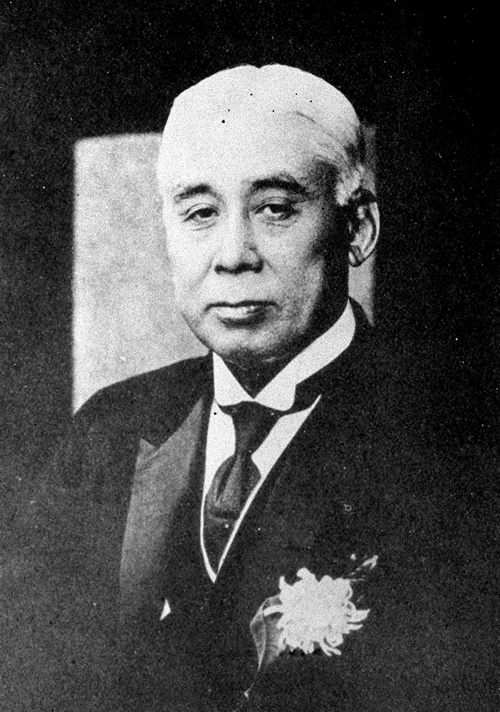 |
| Hara Kei (Hara Takashi) |
Hara Kei (Hara Takashi) was a leading member of the Seiyukai political party in Japan in the early 20th century and the prime minister of Japan from 1918 to 1921.
Hara was born into a family of samurai background in northern Japan in 1856. After working in fields as diverse as diplomacy and journalism, Hara joined the Seiyukai, a political party founded by Ito Hirobumi in 1900, and quickly became one of its leading members.
Although political parties were the leading force in the lower house of Japan's parliamentary body, the Diet, the key posts in the Japanese cabinet, including the position of prime minister, remained dominated at the turn of the century not by party officials but rather by elder statesmen. Hara became one of the foremost champions of allying the Seiyukai with the cabinet.
  |
In 1904, Prime Minister Katsura Taro needed Seiyukai support in the Diet for budget increases in order to fight the Russo-Japanese War. Hara and Katsura made a bargain whereby Hara delivered the necessary assistance in exchange for the future appointment of Seiyukai's president, Saionji Kinmochi, as prime minister.
Saionji eventually served twice as prime minister, from 1906 to 1908 and then from 1911 to 1912. As home minister in Saionji's first cabinet, Hara worked to strengthen the party by recruiting members of the civil bureaucracy into the organization.
In addition, he built support for the party beyond the ranks of officialdom by providing funds for local economic development. By increasing spending on local schools, roads, harbors, and transportation, he gained a following for the Seiyukai among the electorate.
Hara became president of the Seiyukai in 1914 and was selected to serve as prime minister of Japan in the aftermath of the well-known 1918 rice riots, marking the first time that a career party politician held that leading office in the Japanese government. Although Japan had undergone an economic boom as a result of World War I, those on the lower rungs of the social hierarchy struggled with inflation and falling wages.
Hara was in many ways the only leader with significant support in both the Diet's party-dominated lower house and its upper house, the House of Peers, still largely the preserve of nonparty elites, despite the fact that some upper-house delegates had joined political parties. His connections with nonparty elites proved vital to his accession to prime minister.
Upon becoming prime minister, Hara did not embark on a program of sweeping, wholesale changes. The tax qualification for voting was lowered in a move that doubled the size of the electorate, but most of the newly enfranchised were small landholders largely favorable to the Seiyukai.
In a more overtly partisan manner, Hara's government remapped electoral boundaries to benefit the Seiyukai, and his appointments within the bureaucracy were often made with blatantly partisan motives. His government likewise supported defense spending, and Hara made significant efforts to improve relations with the military leadership.
Responding to protests against Japanese imperial rule, Hara attempted to replace the military administrations of Japan's colonial holdings with civilian officials, though the military successfully resisted those efforts in Korea. He also called for assimilation of colonial populations, representation for colonies in the Diet, and the granting of greater civil liberties to colonials.
Hara's career came to a violent conclusion when he was assassinated by a right-wing fanatic in Tokyo Station in 1921, but Hara Kei had played an immensely important role in transforming the Seiyukai into a leading force in Japanese politics in the early 20th century.